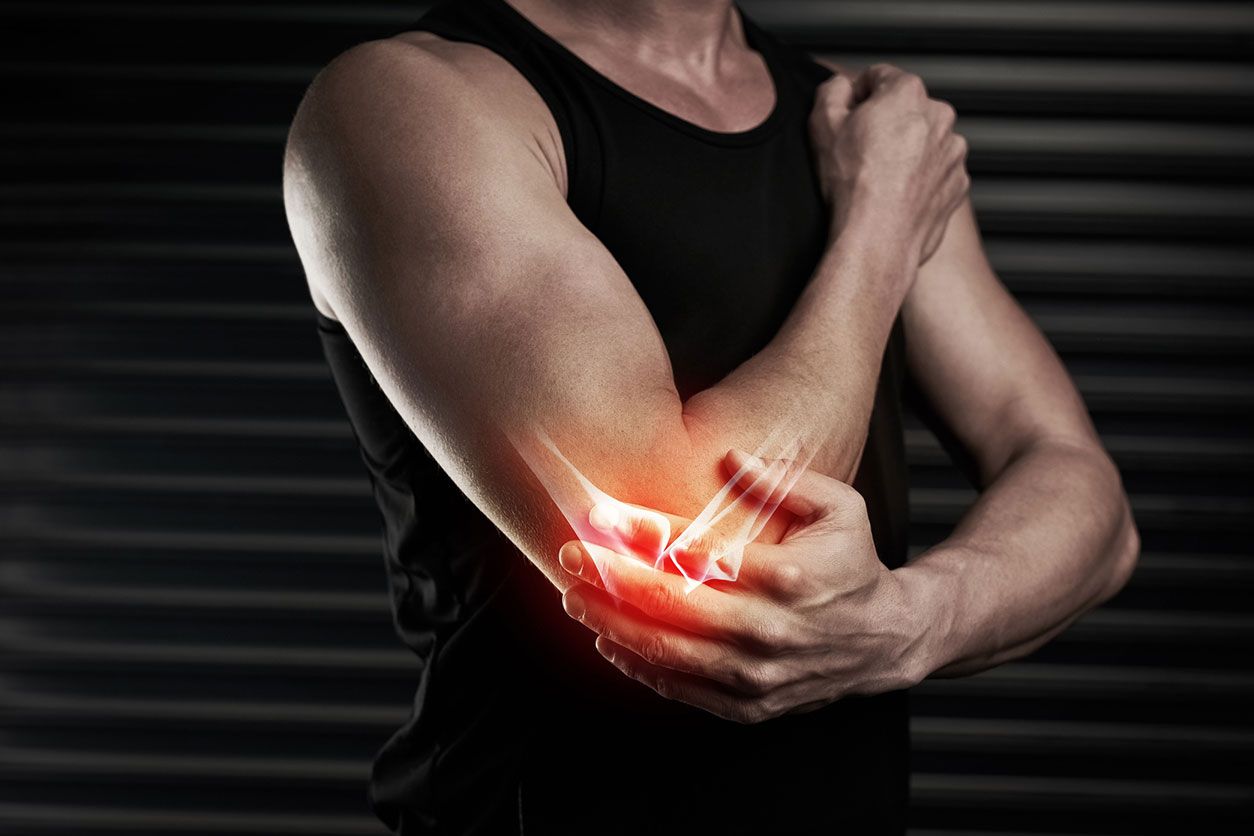What Are the Most Common Elbow Conditions?

Elbow conditions have a way of sneaking up on you, which may explain why they are so common despite the availability of simple and effective treatments.These ailments are associated with popular sports like golf and tennis, both common culprits of ongoing elbow pain. However, it’s just as possible that an elbow condition will develop as a result of overuse: repetitive lifting, hammering nails, or even keyboard use.
Surgery is rarely needed, and you can often recuperate with a little R&R at home. Doctors often recommend that patients recuperate using the PRICE method:
- Protect
- Rest
- Ice
- Compress
- Elevate
It is important to see a doctor for any recurring elbow pain or discomfort. Most elbow problems can be treated by a specialist at a facility like MidAmerica Orthopaedics, which focuses on a wide variety of musculoskeletal conditions. Below are some of the most common elbow conditions that are successfully treated here every day:
Throwing Injuries: Ulnar Collateral Ligament (UCL) Vs Valgus Extension Overload (VEO)
Throwing balls in sports or continually making a similar motion in a mechanical job can lead to similar joint injuries. Ulnar collateral ligament (UCL) injuries of the inner elbow commonly affects throwers, for example. Damage to your UCL may range from a minor tear and inflammation to a complete ligament rupture.
Another common throwing injury, valgus extension overload (VEO), develops when the elbow protrusion is forced against the upper arm bone (humerus). This occurs when repetitive rubbing wears away the cartilage on the point of the elbow and stimulates the bone to grow spurs. Bone spurs of the elbow can lead to swelling, pain, and a reduced range of motion.
Tennis Elbow (Lateral Epicondylitis)
Tennis elbow, or epicondylitis, is a repetitive motion injury caused by inflammation or micro-tearing of the tendons that join the forearm muscles on the outside of the elbow. The injury leads to pain and tenderness on the outside of the elbow and can take some time to heal. It can also be caused by computer mouse use and other repetitive arm motions. Many cases can be treated by avoiding the activity that caused it until the pain improves, but changes in your position or technique may be needed to avoid further injury.
Golfer’s Elbow (Flexor Tendinitis)
The vast majority of people who develop golfer’s elbow, or flexor tendinitis, get it doing something other than golf. This ailment is typically characterized by chronic pain in the inside of the elbow and underside of the forearm. The pain stems from inflammation, and sometimes degeneration, of inner elbow tendons that control wrist, hand and finger movements.
The pain may disappear temporarily as you warm up to exercise, and then return later. It tends to develop gradually in middle age as a result of spending hours a day doing repetitive actions.
As with tendonitis in other parts of the body, treatments vary and don’t typically include surgery, although it may be necessary in severe cases.
Torn or Injured Ligaments
UCL tears aren’t the only examples of elbow ligament injuries. Two other ligaments - the radial collateral ligament and the annular ligament - are also present in the elbow joint. The radial collateral ligament can rupture due to an injury. An annular ligament disruption could be caused by a radial head fracture. A dislocated elbow may also affect ligaments. All of these injuries can induce pain and should receive immediate attention from an elbow specialist.
Elbow Stress Fractures
Elbow fractures are particularly common among young patients, accounting for about 10% of all childhood fractures. Usually, surgery is unnecessary. An elbow fracture typically occurs at the tip of the elbow as a result of a fall or another traumatic injury. The bone might not be the only thing in need of repair.
A simple fracture may heal with a typical cast treatment. But they do require immediate care for the patient to get a proper diagnosis, as well as to prevent further damage to the bone or surrounding soft tissues. A broken bone can also injure muscles, tendons, ligaments, and nerves in the surrounding area. In rare cases, a more serious fracture can cause parts of bone to be considerably out of place, which likely would necessitate surgery.
See a Specialist at MidAmerica’s Northern Illinois Walk-in Clinic or by Appointment
The team of orthopaedic surgeons and specialists at MidAmerica’s Total Joint Clinic are experts at treating traumatic elbow injuries. They can discuss the different treatment options and help you decide which one suits your particular situation best.
Give us a call to start your path towards treatment and recovery at (708) 237-7200, or request an appointment online. MidAmerica Orthopaedics has two locations in Illinois, one in Palos Hills and one in Mokena, serving patients from Chicago and the surrounding suburbs.

